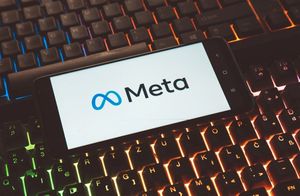
Record-high prices for gold and silver have ignited an alarming surge in numismatic-related crimes, sending shockwaves through the coin dealing and collecting communities. This dramatic escalation in precious metal values has transformed rare coins, bullion, and even everyday jewelry into irresistible targets for increasingly aggressive and organized criminal enterprises. In response, an urgent, industry-wide alert has been disseminated to coin dealers, collectors, and professionals, urging heightened vigilance and a comprehensive overhaul of security protocols to combat this burgeoning threat.
The immediate implications are profound and far-reaching. Businesses and individual collectors are grappling with significant financial losses, while the very fabric of trust within the numismatic market is being tested. The nature of these crimes, ranging from brazen smash-and-grabs to sophisticated online and courier frauds, underscores a critical vulnerability that demands an immediate and coordinated defensive strategy from all stakeholders. The situation is further complicated by forecasts predicting continued upward trajectory for gold prices, suggesting that this crime wave is not a fleeting phenomenon but a persistent challenge that will redefine security practices in the precious metals sector.
A Torrent of Thefts: Unpacking the Numismatic Crime Spree
The current wave of numismatic crimes is characterized by its diversity, aggression, and increasing sophistication. Law enforcement and industry bodies, most notably the Numismatic Crime Information Center (NCIC), report a significant uptick in various modus operandi designed to exploit the elevated value of gold and silver. Among the most prevalent are "grab-and-run" thefts, where suspects feign interest in high-value items before fleeing, often with the assistance of accomplices to create distractions or block pursuit. These incidents frequently target establishments perceived as having lax security.
More concerning are the organized "smash-and-grab" attacks, where coordinated groups, often masked, use tools like sledgehammers and pry bars to breach display cases and abscond with large quantities of gold and silver in mere seconds. A particularly insidious trend involves the targeting of coin dealers after they leave major coin shows, with organized crime groups following victims for hundreds of miles before burglarizing their vehicles of valuable inventory. Beyond physical theft, sophisticated "courier fraud" schemes are on the rise, where criminals impersonate authorities to trick victims into purchasing precious metals as part of a fake investigation, only to collect the "evidence" and vanish. Online fraud, involving counterfeit coins and bullion sold at suspiciously low prices on platforms like Google, and an increase in mail theft of graded coins and banknotes, complete the grim picture of a multi-front assault on the numismatic world. Doug Davis, Founder of the NCIC, has been a key voice in issuing these urgent warnings, emphasizing the direct correlation between rising precious metal values and the surge in criminal activity. The timeline of these events closely mirrors the ascent of gold and silver prices, with a noticeable acceleration in criminal incidents coinciding with gold nearing and potentially surpassing $2,000 per ounce and silver following suit. This has led to an industry-wide scramble to enhance security measures, share intelligence, and educate both dealers and collectors on preventive strategies.
Market Ripple Effects: Winners, Losers, and Strategic Shifts
The surge in numismatic crimes, fueled by record precious metal prices, is creating a distinct landscape of winners and losers within the broader financial and security markets. Companies specializing in security solutions are poised for significant gains. Brink's Company (NYSE: BCO), a global leader in secure logistics and cash management, and other armored transport services will likely see increased demand from dealers and collectors needing secure transportation for high-value items. Similarly, manufacturers of physical security products, such as high-security safes, alarm systems, surveillance cameras, and impact-resistant display cases, are experiencing a boom. Companies like Allegion plc (NYSE: ALLE) and Johnson Controls International plc (NYSE: JCI), which offer a range of security technologies, could benefit from the heightened need for robust protection in retail environments and private collections.
Conversely, independent coin dealers and smaller numismatic businesses, particularly those with limited resources for advanced security infrastructure, face significant challenges. They are "losing" in the sense of increased exposure to theft, higher insurance premiums, and potential reputational damage if they become repeat targets. The rising cost of doing business, driven by security upgrades and insurance, could squeeze profit margins or even force some smaller players out of the market. Insurance companies specializing in collectibles and high-value assets, while facing an increase in claims, are also in a position to adjust premiums upwards, potentially offsetting losses and benefiting from increased demand for comprehensive coverage from a more risk-aware clientele. Precious metal miners like Barrick Gold Corporation (NYSE: GOLD) and Newmont Corporation (NYSE: NEM) continue to "win" from the underlying price appreciation of gold and silver, which is the root cause of the crime surge. However, the increased security concerns could indirectly impact their downstream distribution channels if dealers become hesitant to carry large inventories. The overall market for numismatic items could also see a shift, with a greater emphasis on certified, graded, and securely stored items, potentially benefiting grading services like Professional Coin Grading Service (PCGS) and Numismatic Guaranty Corporation (NGC), as their services add a layer of authenticity and security, making items less susceptible to fraud.
Broader Significance: A Bellwether for Economic Uncertainty
This unprecedented spike in numismatic crimes, directly linked to soaring gold and silver prices, serves as a potent bellwether for broader economic anxieties and societal shifts. Historically, precious metals have been viewed as safe-haven assets, with their value often appreciating during periods of economic instability, inflation, or geopolitical uncertainty. The current record prices suggest a widespread lack of confidence in traditional financial instruments and a flight to tangible assets, indicating deep-seated concerns about the future economic landscape. This event fits squarely into a broader trend of increased asset-based crime whenever a particular asset class experiences rapid and significant value appreciation. From art heists during economic downturns to spikes in luxury car thefts, criminals consistently target what is valuable and liquid.
The ripple effects extend beyond the numismatic community. Increased security requirements for precious metal dealers could set new precedents for other high-value retail sectors. Regulatory bodies might consider stricter guidelines for the storage, display, and transportation of precious metals, potentially impacting everything from pawn shops to high-end jewelry stores. Policy implications could include calls for enhanced law enforcement training specific to numismatic crime and greater inter-agency cooperation to track stolen goods across state and international borders. Historically, periods of high inflation or economic crisis have often coincided with increased property crime and theft of high-value goods, as individuals and organized groups seek to capitalize on perceived opportunities or mitigate personal financial hardship. The current situation echoes the crime waves seen during the inflationary periods of the 1970s and early 1980s, albeit with modern criminal methodologies. The ease of online transactions and communication now provides new avenues for fraud and illicit trade, making this crime wave particularly challenging to combat compared to historical precedents. This situation underscores the critical intersection of economic trends, criminal behavior, and the evolving challenges of securing valuable assets in a digital age.
The Road Ahead: Navigating a Volatile Landscape
The path forward for the numismatic industry and precious metals market will be defined by a series of strategic adaptations and evolving challenges. In the short term, expect an intensified focus on security. Coin dealers and collectors will likely invest heavily in advanced surveillance, reinforced physical barriers, secure storage solutions, and armed guards for high-value transactions or events. The NCIC's calls for increased vigilance, intelligence sharing, and participation in crime-tracking networks will become standard practice. Security training workshops will see higher attendance, and comprehensive security risk assessments will become an essential operational component for businesses and serious collectors. Law enforcement agencies will need to allocate more resources to investigating these specialized crimes, requiring enhanced training and collaboration with industry experts.
Long-term possibilities include a fundamental shift in how precious metals are traded and stored. There could be a greater move towards institutional storage solutions, where individuals and smaller dealers store their high-value assets in secure, third-party vaults, reducing their direct exposure to theft. The market might also see an increased preference for digital ownership of precious metals, through exchange-traded funds (ETFs) or other financial instruments, which mitigate physical security risks, although these carry their own set of digital security concerns. Strategic pivots for the industry could involve greater standardization of security protocols across all major numismatic events and retail outlets, potentially driven by insurance companies or industry associations. Market opportunities may emerge for innovative security technology providers, specialized insurance products, and secure logistics companies. Conversely, challenges will include maintaining profitability amidst rising security costs, rebuilding consumer confidence, and adapting to increasingly sophisticated criminal tactics. Potential scenarios range from a successful industry-wide crackdown that significantly reduces crime rates, to a more pessimistic outlook where criminal activity continues to evolve, forcing a more drastic restructuring of the physical precious metals market. Investors should watch for further developments in security technology, changes in insurance policies, and any new regulatory frameworks impacting the trade and storage of precious metals. The ongoing trajectory of gold and silver prices will, of course, remain a critical factor influencing both the crime rate and the industry's response.
A Resilient Market Under Siege: Final Thoughts
The current spike in numismatic crimes, intrinsically linked to the surging prices of gold and silver, represents a critical juncture for the precious metals and collecting industries. The key takeaway is clear: the increased value of these tangible assets has made them irresistible targets, forcing an immediate and comprehensive re-evaluation of security practices across the board. The industry-wide alert issued to coin dealers underscores the severity and urgency of the threat, demanding a united front from all stakeholders – from individual collectors to major financial institutions.
Moving forward, the market will undoubtedly become more security-conscious. This will manifest in higher operational costs for dealers, potentially leading to a consolidation within the industry as smaller players struggle to meet enhanced security demands. Consumer confidence, while potentially shaken in the short term, will ultimately depend on the industry's ability to effectively deter and prosecute these crimes, ensuring the integrity and safety of transactions. The lasting impact will likely be a more robust, albeit more complex, security infrastructure surrounding precious metals. Investors should closely monitor not only the price movements of gold and silver but also the evolving security landscape, the performance of security-related companies, and any shifts in insurance and regulatory policies. The resilience of the numismatic market will be tested, but its long history suggests an inherent ability to adapt. The coming months will reveal the effectiveness of current countermeasures and dictate the future shape of security in the world of precious metals.
This content is intended for informational purposes only and is not financial advice






